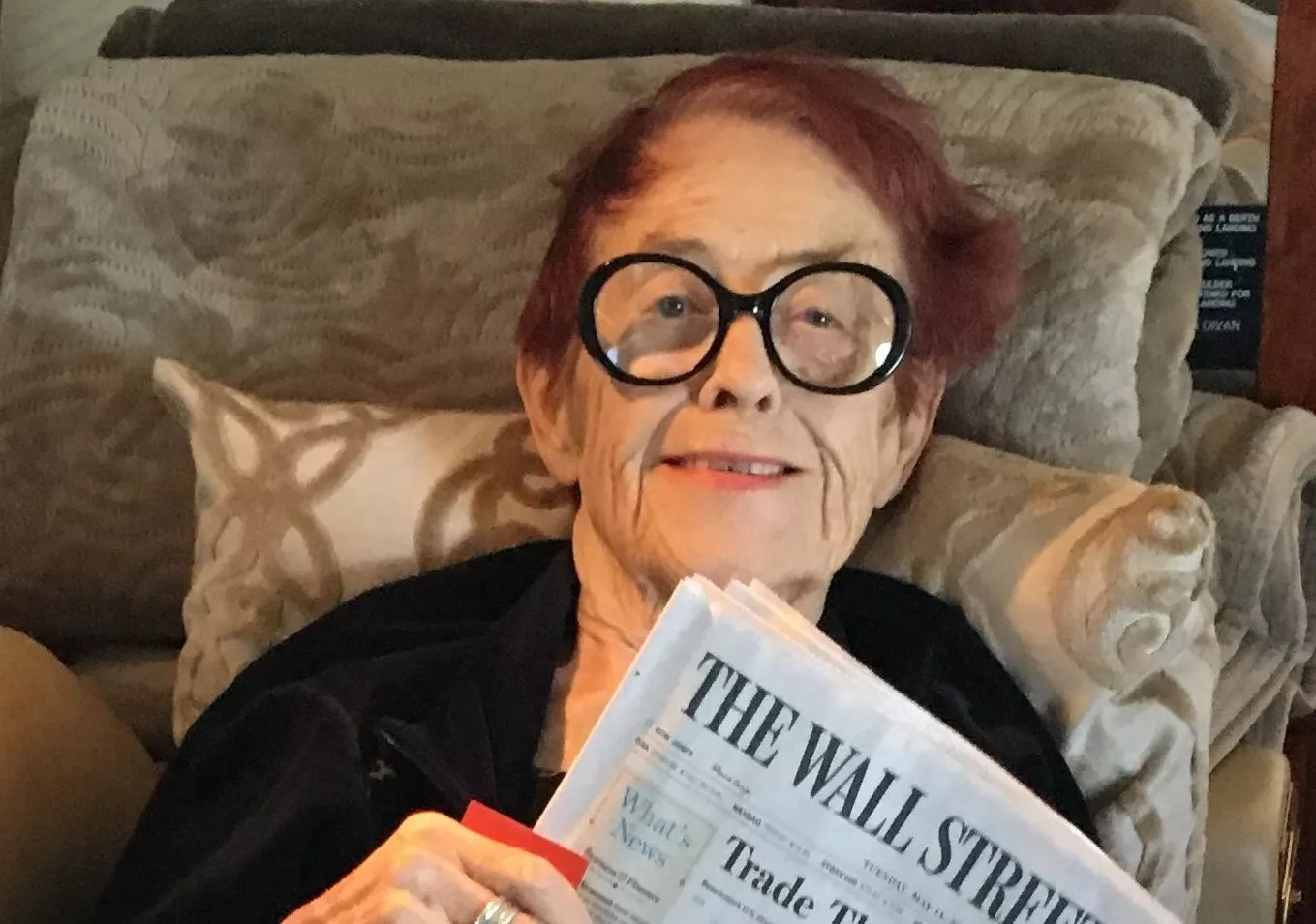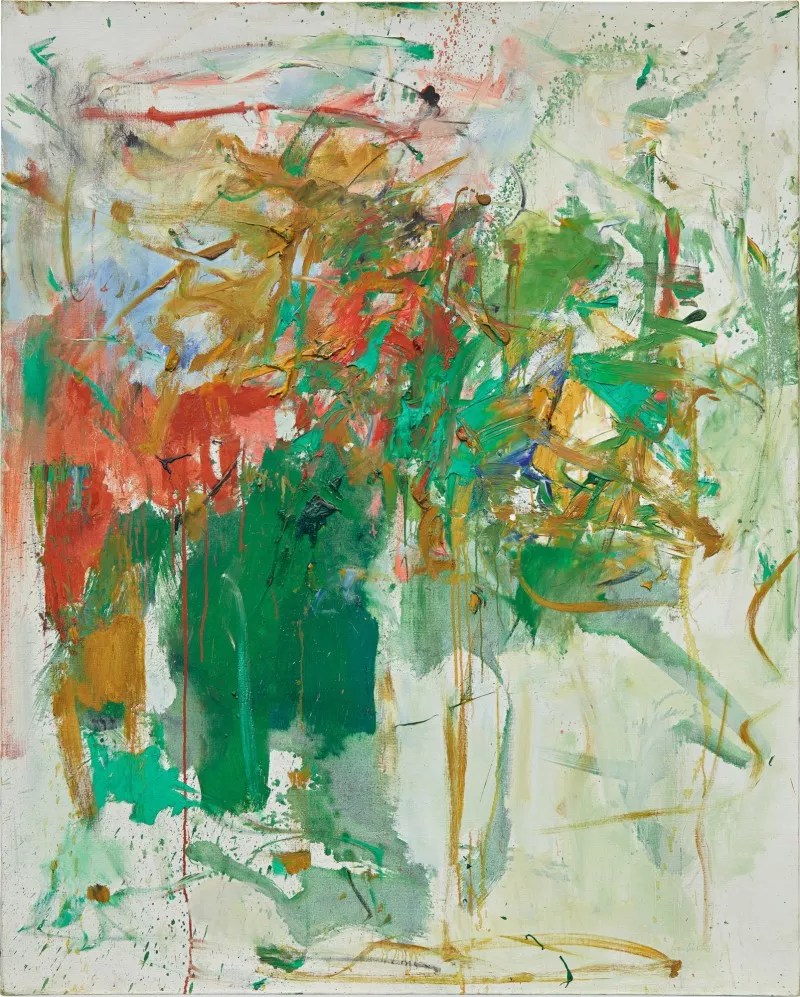
Courtesy of Sotheby’s

Audio By Carbonatix
Sotheby’s scored big on June 29, selling off part of what would have been the collection of a never-opened Denver art museum.
The New York auction house mounted “The Ginny Williams Collection Evening Sale” to liquidate the first eighteen lots of 450 pieces from the Denver art patron’s estate. These initial offerings were meant to be the keystones for a never-opened Denver museum that had been on the horizon for Williams – and for us – for decades.
Williams had been an early collector of art by women, and had acquired some very important pieces as a result. Her forward thinking rewarded her heirs, with every work selling at least within its estimate and several star pieces going way, way beyond what was anticipated.

Helen Frankenthaler,
Courtesy of Sotheby’s
Denver, make your New Year’s Resolution Count!
We’re $15,500 away from our End-of-Year campaign goal, with just a few days left! We’re ready to deliver — but we need the resources to do it right. If Westword matters to you, please contribute today to help us expand our current events coverage when it’s needed most.
Among the sweepstakes winners was Helen Frankenthaler’s “Royal Fireworks,” a color-field abstraction created in 1975. The painting is the size of a small billboard, at five feet by thirteen feet. Exemplifying Frankenthaler’s classic staining method, in which thinned-out pigments bleed into raw canvas, the work had a pre-sale estimate of $2 million to $3 million, but it ultimately doubled the high end of the estimate, selling for $7.89 million. Joan Mitchell, Courtesy of Sotheby’s
Two of the Joan Mitchell works were also exceptionally strong, though it was surprising to see that one sold only within its estimate. “Straw,” from 1976, a characteristic action painting that’s ten feet high by six feet across, covered in slashing stokes of various colors, was appraised at between $5 million and $7 million but sold for $8.8 million, nearly $2 million over the high end of the estimate.
Likewise performing beyond expectations was “Garden Party” from 1961-’62, the smallest of the three at just over five feet by four feet, and with the lowest estimate at $4 million to $6 million. But it also went for nearly $2 million over that, selling for $7.89 million. The third, 1956’s “Liens Colorés,” measuring slightly over four feet by six feet, must have been a slight disappointment when it was hammered down within the $5 million to $7 million estimate, selling at the low end for $5.95 million.

Lee Krasner,
Courtesy of Sotheby’s
One of two paintings by Lee Krasner did extremely well: The five-foot-by-five-foot “Re-Echo,” from 1957, was projected to sell for between $4 million and $6 million but shot up to $9 million. The other Krasner, also from 1957, “Earth Green,” at approximately eight feet by six feet, was the only piece in the group to sell below the low end; estimated at $2.5 million to $3.5 million, it changed hands for $2.25 million. Agnes Martin, Courtesy of Sotheby’s
The Agnes Martin sale was surprisingly strong, with 1985’s “Mountain Flowers I,” a classic minimalist grid measuring six feet by six feet, bringing nearly twice the high end of its $2 million to $3 million estimate, selling for $5.2 million.

Louise Bourgeois,
Courtesy of Sotheby’s
Also performing beyond expectations was the mammoth installation “Eye Benches I,” one of the last pieces by Louise Bourgeois, from 2010, which was estimated to sell for between $800,000 and $1.2 million. Instead, bidders drove it up to $3.3 million.
Bourgeois’s “Observer” went just over the high end of its $1.5 million to $2 million estimate, selling for $2.2 million.
The total take from the eighteen Williams pieces was slightly over $59 million, and that’s just the start of the bounty that her heirs are set to receive, with many future Sotheby’s auctions slated to include Williams material. The next batch goes on the block on July 14, when “Photographs From the Ginny Williams Collection” is scheduled.
If you were wondering whether COVID-19 would stifle high-end art sales, the answer is “apparently not.”
For the complete list of prices realized, go to the Sotheby’s website.